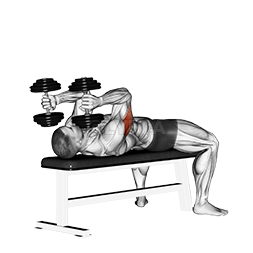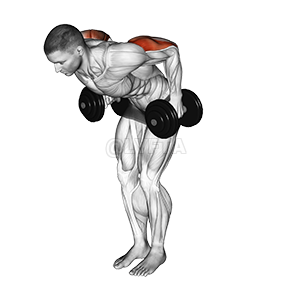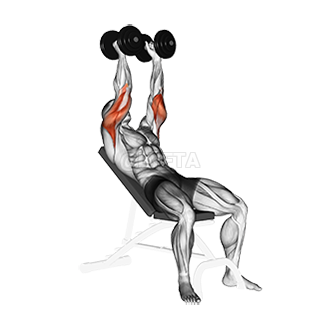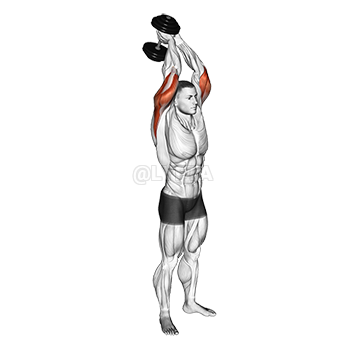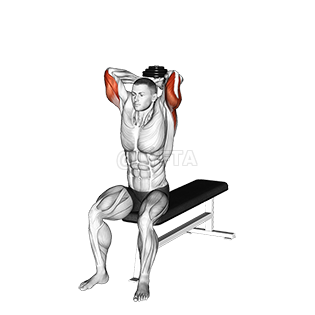
Dumbbell Kickback
Exercise Profile
Related Exercises:
Introduction to the Dumbbell Kickback
The Dumbbell Kickback is a targeted strength exercise that primarily works the triceps, with secondary benefits to the shoulders and core. It's an excellent choice for individuals at any fitness level, especially those looking to improve upper body strength and muscle definition. Incorporating this exercise into your routine can enhance arm stability, promote better posture, and contribute to a well-rounded fitness regimen.
Performing the: A Step-by-Step Tutorial Dumbbell Kickback
- Bend your knees slightly and lean forward from your hips, maintaining a straight spine.
- Keep your upper arms close to your body and bend your elbows to a 90-degree angle, this is your starting position.
- Slowly extend your arms straight back without locking your elbows, while squeezing your triceps.
- Gradually lower the dumbbells back to the starting position and repeat the movement for your desired number of repetitions.
Tips for Performing Dumbbell Kickback
- **Controlled Movement:** Avoid swinging the dumbbell. Instead, focus on controlled, smooth movements. This ensures that your tricep muscles are doing the work, not momentum. Extend your arm fully, but don’t lock your elbow at the top of the movement.
- **Right Weight Selection:** Choose a weight that allows you to perform the exercise with proper form and control. If the weight is too heavy, you may compromise your form or risk injury. Start with a lighter weight and gradually increase as your strength improves.
- **Breathing Technique:** Don't hold your breath during the exercise. Exhale as you extend your arm and inhale as you return to the
Dumbbell Kickback FAQs
Can beginners do the Dumbbell Kickback?
Yes, beginners can do the Dumbbell Kickback exercise. However, it's important to start with a light weight to ensure proper form and prevent injury. It's also beneficial to have someone knowledgeable in fitness, like a trainer, observe your form to make sure you're doing the exercise correctly. As with any exercise, it's important to gradually increase the weight as your strength improves.
What are common variations of the Dumbbell Kickback?
- Bent-Over Dumbbell Kickback: In this variation, you bend over at the waist while performing the exercise, which can help engage your core and improve balance.
- Incline Dumbbell Kickback: This version is performed on an incline bench, which changes the angle of the exercise and targets the triceps from a different perspective.
- Dumbbell Kickback with Resistance Bands: By adding resistance bands to the dumbbell kickback, you can increase the intensity and challenge of the exercise.
- Seated Dumbbell Kickback: This variation is performed while seated on a bench, which can help those with lower back issues continue to strengthen their triceps.
What are good complementing exercises for the Dumbbell Kickback?
- Push-ups: Push-ups work the triceps, chest, and shoulders, providing a more comprehensive upper body workout that complements the isolated tricep work of Dumbbell Kickbacks, and can improve muscle endurance and strength.
- Skull Crushers: This exercise also targets the triceps, similar to Dumbbell Kickbacks, and can help to further isolate and strengthen these muscles, improving muscle definition and potentially enhancing the results from Dumbbell Kickbacks.
Related keywords for Dumbbell Kickback
- Dumbbell Kickback exercise
- Triceps workout with Dumbbell
- Upper Arm strengthening exercises
- Dumbbell exercises for Triceps
- Dumbbell Kickback for Upper Arms
- Triceps toning with Dumbbell
- Arm workout with Dumbbell Kickback
- Strengthening Triceps with Dumbbell
- Dumbbell Kickback technique
- Effective Dumbbell exercises for arms
